Chhena poda, the difficult-to-make Odiya dessert in the news for a GI tag, is being served by a handful in Mumbai. A chat with those building a fan club for the desi cheesecake.

Heena Punwani's chenna poda at The Bombay Canteen
The most flavourful bit of the Odia dessert chhena poda, that literally translates to burnt cheese, is the burnt upper crust of the desi cousin of cheesecake. The sweet, for which the state had put forth a request for a Geographical Indication tag last year, is spongy, like bread pudding in texture, but creamier and softer like cheesecake.
Many Mumbaikars may not have tasted it since it is rare to find in the city. Heena Punwani, pastry chef at The Bombay Canteen, tells us that she first heard of it when the eatery's chef partner Thomas Zacharias was planning his regional food research trip to Odisha. "We tried to source it in Mumbai for a taste, but it didn't live up to its reputation. So, Thomas carried it back from Odisha. It was a cross between a baked rosogulla and a cheesecake with beautiful, charred edges that brought in a lovely burnt caramel flavour and cut through the sweetness of the dessert," she tells us about the dish that's now on their Sunday brunch menu.
ADVERTISEMENT
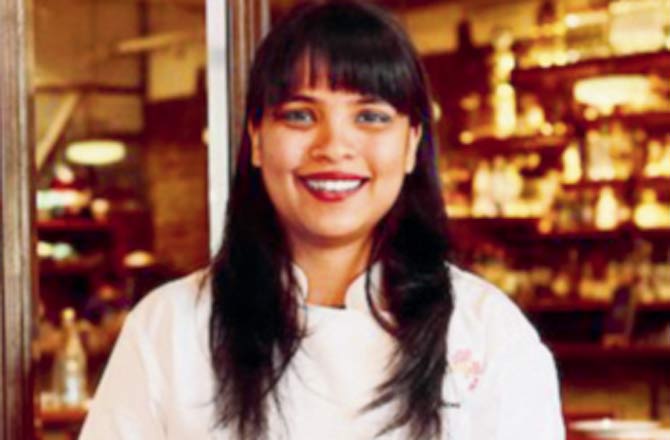
Heena Punwani
"It's best burnt as the flavour reveals itself then, the more burnt, the better it tastes. Baking it in a charcoal furnace or bhatti also gives it the signature smoky flavour," says Dahisar resident and home chef Himani Patnaik, who has consumed her family's favourite for all three meals on occasion. "It's 95 per cent chhena, the paneer-like residue left after you strain curdled milk, and so, quite light. And it can be made all year round," she says.
For Sneha Senapati, the chhena poda was part of the annaprasana (baby's first solid meal). "It originated at Pahala village near Cuttack but soon spread to households across the state, and beyond to Bengal. It's made on every important occasion and offered as bhog at temples," informs Senapati, who moved to Mumbai in 2006, and began her quest for authentic Odia food. On failing to find something that satiated her seasoned taste buds, she discovered her love for cooking, and started holding her own pop-ups via food experience organisers Authenticook.
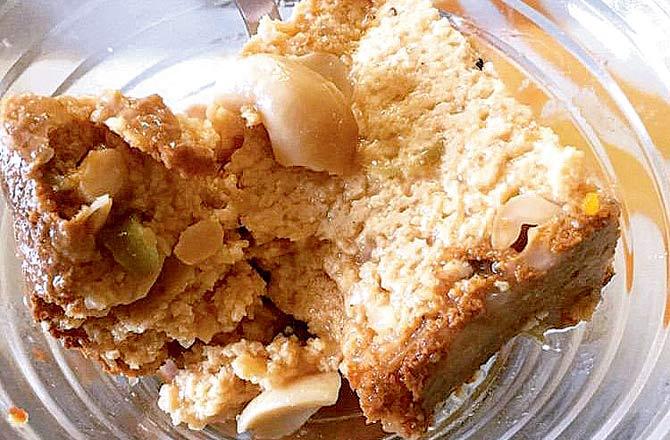
Sneha Senapati and her version of chhena poda
Ingredients are key
Though the dish only requires a few ingredients — milk, sugar and cardamom — using the right variety is crucial. "Finding the right kind of milk in Mumbai was key to making the perfect texture. We source full-fat milk to make our chhena, and it has to be made at the right temperature for the soft mouth-feel," says Punwani, who has kept the original flavours intact at the Lower Parel eatery, where it's served with seasonal strawberries from Mahabaleshwar in the form of a coulis and compote. Kora khai, jaggery coated rice puffs, served in temples of Bhubaneshwar, add a crunch to this version.
Letting us in on a family secret, Senapati tells us that instead of using vinegar, lime juice is used to curdle the milk. "We tie it in a muslin cloth and strain it for three hours to release the water. It's then kneaded with sugar, cashew and raisins," she says. Thick grain sugar should be used so that it doesn't melt completely into the mixture while baking, and creates a syrup of its own, adds Punwani.

Her preparation
Labour of love
Chef Ananya Banerjee works with rare cuisines, though her forte is home-style Bengali. Which is how she stumbled across Odia cuisine, and has perfected her take on the chhena poda. She first made it in a charcoal oven in Odisha, but has had to tweak the recipe here to get the burnt look and texture in using an electric oven at her Sewree residence. "I caramelise the sugar till it's a little brown. I put ghee on the pan, butter would give it a more cake-like feel," she says. Senapati, who uses her aunt's recipe, also oven-bakes it in her Andheri kitchen. "I grill it after as it doesn't get the burnt flavour in a microwave," she explains.
"Baking in the oven doesn't work, as you don't get the charred, caramelised edges. We slow bake it for an hour and a half over charcoal. Lining the tin with parchment doesn't work, because the paper burns. It is lined with sal leaves soaked overnight. You can distinguish a true chhena poda from the imitations by the indentation of the sal leaves on the sides," Punwani reveals.
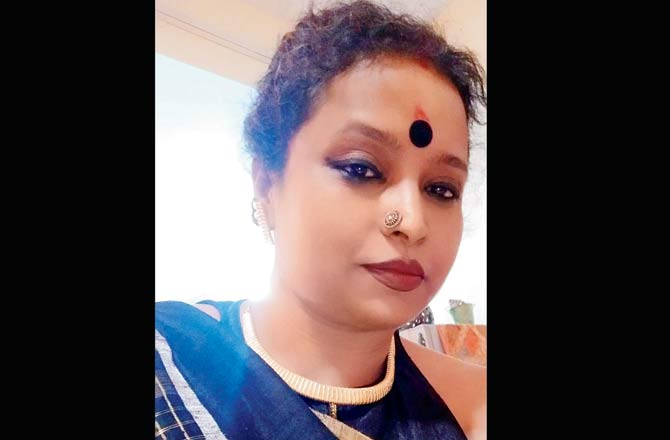
Himani Patnaik
Patnaik makes it in a pressure cooker at home but uses a base of salt on top of which she place the mould. "It takes 40 minutes to get a brown layer — not as distinct as with charcoal and not as smoky."
No Bong connect here
Unlike the two different kinds of rosogullas — the Odia version is brown as their chefs use jaggery or roast the sugar, while the Bengali one is white — there's only one version of chhena poda. But the Bengali sweet bhapa sandesh is similar. It's not baked directly. The chhena is steamed and then put in the oven. It lacks the caramelised texture of the Odia dish.
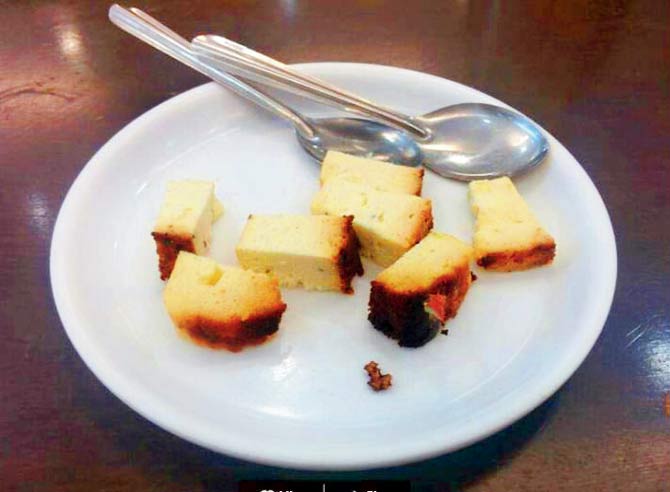
The dish at Odiya Bhavan, Vashi
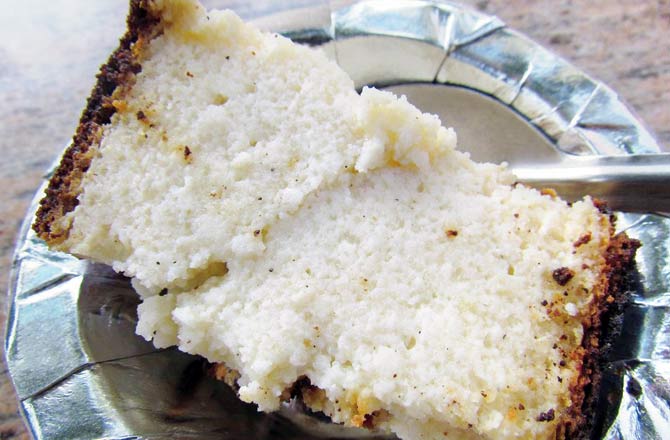
The version served at Rosobongo, Mira Road
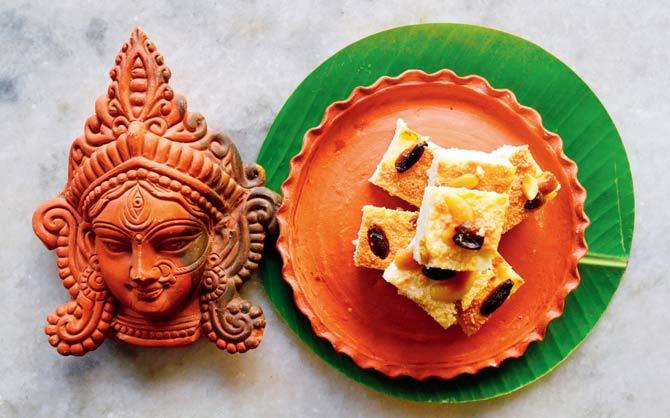
Ananya Banerjee's version made in an OTG
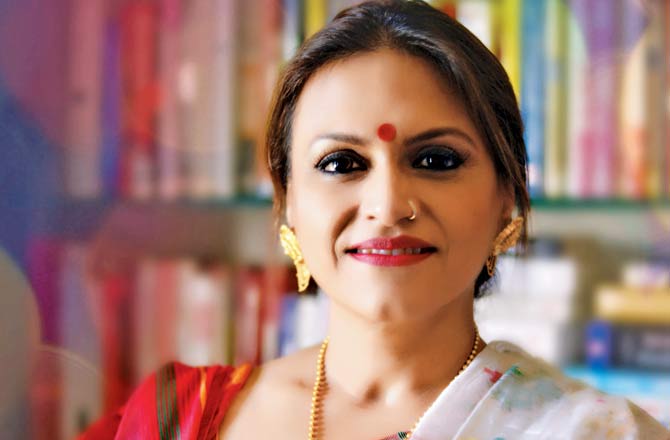 Ananya Banerjee
Ananya Banerjee
Catch up on all the latest Mumbai news, crime news, current affairs, and also a complete guide on Mumbai from food to things to do and events across the city here. Also download the new mid-day Android and iOS apps to get latest updates
 Subscribe today by clicking the link and stay updated with the latest news!" Click here!
Subscribe today by clicking the link and stay updated with the latest news!" Click here!







